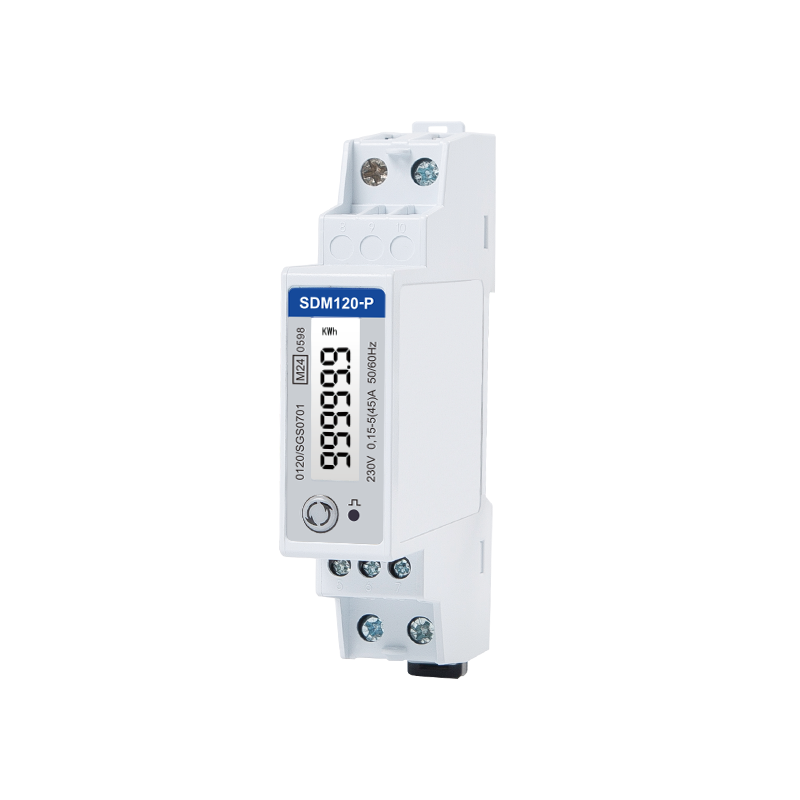Product Consultation
Your email address will not be published. Required fields are marked *
In the modern landscape of industrial automation, smart buildings, and energy-efficient infrastructure, accurate and real-time power measurement has become indispensable. At the heart of this evolution lies a critical yet often underappreciated device — the DIN Rail Energy Meter . Designed for seamless integration into electrical control panels, these meters offer precise monitoring of energy consumption, voltage fluctuations, current loads, and power quality across a wide range of applications.
What is a DIN Rail Energy Meter?
A DIN Rail Energy Meter is a compact, modular measuring device designed to be mounted on a standard DIN rail (a type of metal rail used in electrical cabinets). These meters are engineered to measure and record various electrical parameters such as:
Active and reactive energy (kWh/kvarh)
Voltage (V), Current (A), and Frequency (Hz)
Real-time power (kW, kVA, kVAr)
Harmonics and Total Harmonic Distortion (THD)
Power factor
Load profiles and peak demand
They are commonly used in low-voltage distribution systems, including commercial buildings, data centers, manufacturing plants, renewable energy installations, and electric vehicle charging stations.
Key Components and Technical Architecture
Modern DIN rail energy meters combine advanced sensor technology with embedded microprocessors and communication interfaces. Their internal structure typically includes:
Current Transformers (CTs) and Voltage Sensors : These components capture real-time current and voltage levels flowing through the circuit.
Signal Conditioning Circuitry : Converts analog signals from sensors into digital values for processing.
Microprocessor Unit (MPU) : Computes energy metrics using algorithms that comply with international standards like IEC 62053.
Memory Modules : Store historical data, load profiles, and event logs for later retrieval or analysis.
Communication Interfaces : Support protocols such as Modbus RTU/TCP, Modbus over Ethernet, BACnet, KNX, or MQTT, enabling integration with Building Management Systems (BMS), SCADA systems, or cloud-based platforms.
Power Supply Unit : Ensures stable operation even under fluctuating line voltages.
Many models also feature LED displays or LCD screens for local readouts and diagnostics, while others rely on remote access via software dashboards.

Why DIN Rail Mounting Matters
The DIN rail form factor is more than just a design choice — it's a strategic advantage. Here's why:
Space Efficiency : DIN rail meters are compact, allowing multiple devices to be installed side by side in tight enclosures.
Ease of Installation and Maintenance : Quick snap-on mounting simplifies both initial setup and future upgrades.
Standardization : DIN rails follow global standards (e.g., EN 50022), ensuring compatibility across brands and regions.
Scalability : Systems can be expanded easily by adding more meters or integrating them with other DIN rail-mounted components like relays, circuit breakers, or PLCs.
Applications Across Industries
1. Commercial and Residential Buildings
Used for tenant sub-metering, HVAC monitoring, lighting control, and overall building energy management.
2. Industrial Facilities
Monitor production line power usage, detect inefficiencies, and support predictive maintenance strategies.
3. Data Centers
Critical for tracking PUE (Power Usage Effectiveness) and optimizing cooling systems to reduce operational costs.
4. Renewable Energy Systems
Integrate with solar inverters, wind turbines, and battery storage systems to measure generation, consumption, and grid interaction.
5. Electric Vehicle Charging Infrastructure
Ensure accurate billing, load balancing, and compliance with regulatory standards.
Benefits of Using DIN Rail Energy Meters
High Accuracy : Class 0.5S or better accuracy ensures reliable billing-grade measurements.
Real-Time Data Access : Enables immediate detection of anomalies or inefficiencies.
Remote Monitoring & Control : Supports IoT-enabled systems and centralized energy management platforms.
Compliance and Reporting : Helps meet ISO 50001, LEED certification, and utility rebate requirements.
Cost Savings : Identifies energy waste, supports demand response programs, and reduces peak load charges.
Choosing the Right DIN Rail Energy Meter
Selecting an appropriate meter depends on several factors:
Measurement Requirements : Do you need basic kWh monitoring or advanced harmonics analysis?
Installation Environment : Indoor vs. outdoor, ambient temperature, humidity, and dust levels.
Communication Needs : Wired (RS485, Ethernet) or wireless (Wi-Fi, LoRa, NB-IoT)?
Certifications and Standards : Ensure compliance with IEC, ANSI, or regional regulations.
Vendor Ecosystem : Compatibility with existing control systems and availability of technical support.
Popular manufacturers include Schneider Electric , Siemens , ABB , Eastron , Carlo Gavazzi , and Circutor , each offering a range of models tailored to different use cases.
The Future of Energy Measurement
As industries move toward digitization and decarbonization, DIN rail energy meters are evolving into intelligent edge devices. With built-in analytics, AI-driven insights, and secure connectivity, they are becoming integral parts of smart grids, digital twins, and decentralized energy networks.
Moreover, the rise of green building codes and carbon reporting mandates means that energy transparency is no longer optional — it's a regulatory necessity. DIN rail meters provide the foundational data required to meet these demands efficiently and accurately.
Your email address will not be published. Required fields are marked *
We develop and produce high performance electricity meters, power analyzers, current sensors, communication modules and management systems. China Custom Smart Meters Manufacturers and Factory
Eastron China (HQ) : NO 52, Dongjin Road, Nanhu, Jiaxing, Zhejiang, China
Eastron UK : Suite 1 Cornwallis House, Howard Chase, Basildon, UK
Eastron EU : Unit 3 Finglas Business Centre, Jamestown Road, Finglas, Dublin, Ireland
Copyright @ Eastron Electronic Co., Ltd. All rights reserved Electricity Meters Manufacturers
